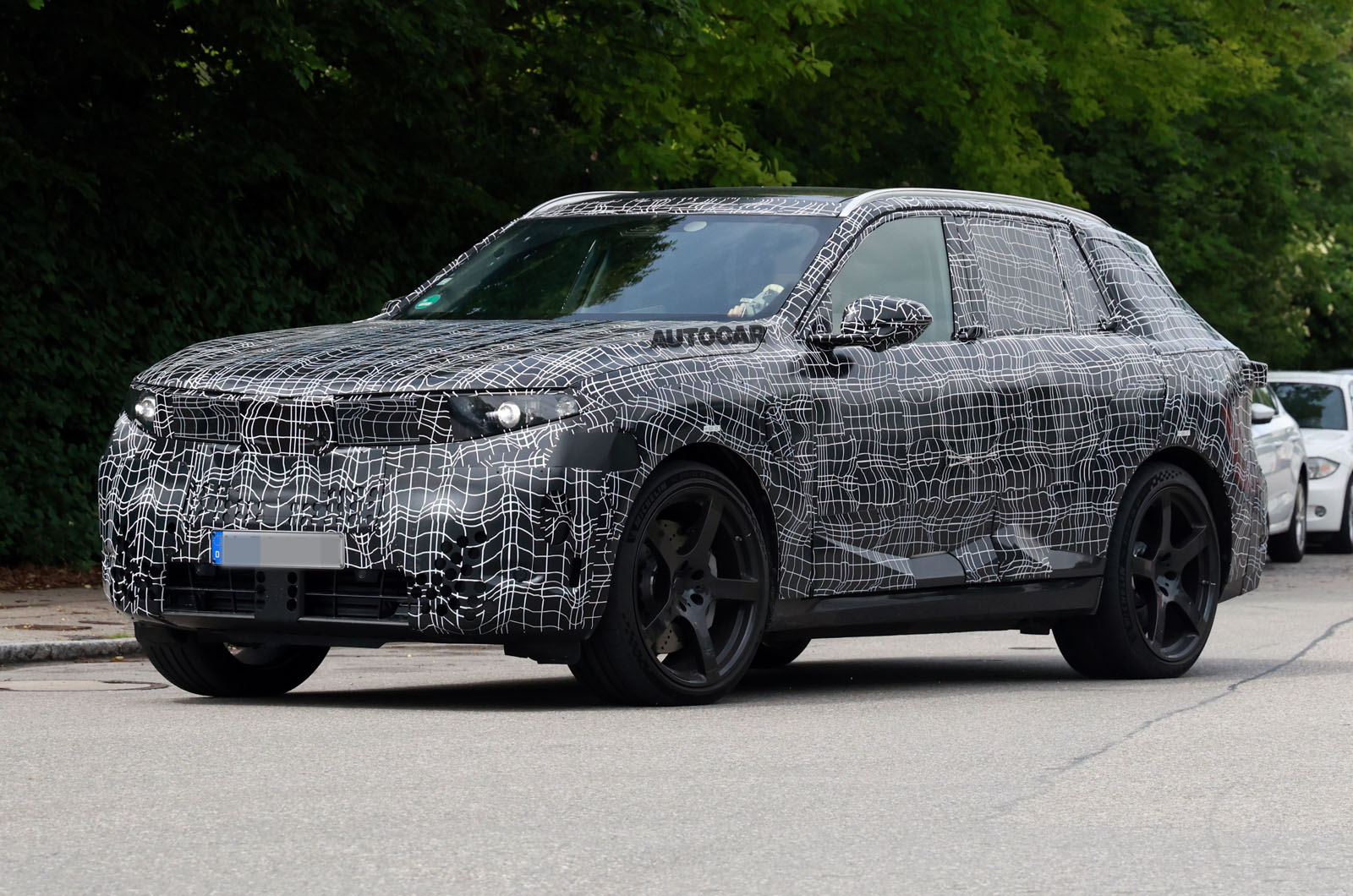How GM + Nvidia are changing the face of the automotive industry
The AI-focused partnership will usher in the next generation of industrial robotics. The post How GM + Nvidia are changing the face of the automotive industry appeared first on FreightWaves.

General Motors is making significant strides in revolutionizing its manufacturing processes through a new partnership with chipmaker Nvidia. Announced in March, the collaboration aims to harness the power of artificial intelligence to enhance automation, cut costs and improve efficiency across GM’s factories.
At the heart of this partnership is Nvidia’s advanced computing technology, which GM is leveraging to build custom AI systems for its manufacturing operations. The automaker is using Nvidia Omniverse with Cosmos to create digital twins of its assembly lines, allowing for virtual testing and simulation of production processes before physical implementation.
This is JP Hampstead, co-host with Craig Fuller of the Bring It Home podcast. Welcome to the 25th edition of our newsletter, where we go deep into one of the largest-scale tech-industrial partnerships in the automotive industry.
“Using digital twins, we simulate a running production line before it’s constructed, optimizing our planning process and allowing us to scale faster while saving time and money,” explained JP Clausen, GM’s executive VP of global manufacturing and sustainability. “It also helps our team members identify and solve problems more effectively.”
These digital simulations enable GM to test and refine new production processes without disrupting existing vehicle manufacturing, a critical advantage as the company balances production of both traditional combustion engines and electric vehicles.
The partnership extends to training robotics platforms for operations such as material handling, transport and precision welding. Through a combination of AI and machine learning, GM has developed systems that can identify potential issues in manufacturing, such as leaks in battery packs, allowing for quick repairs and supporting quality control.
The automotive industry, led by companies like GM, remains the largest user of industrial robots in America. According to Brookings Institute data, nearly half of the 233,305 industrial robots in the United States are employed in auto manufacturing. Michigan, home to GM’s headquarters, accounts for nearly 28,000 robots — approximately 12% of the nation’s total.
Detroit, in particular, stands out as the robot capital of America, with more than three times the number of industrial robots compared to other metropolitan areas. By 2015, the Detroit-Warren-Dearborn area had 15,115 industrial robots in place, or 8.5 per 1,000 workers, a significant increase from 5,753 robots in 2010.
This high concentration of automation has contributed to a dramatic shift in GM’s workforce composition over decades. In 1979, GM employed 468,000 American hourly workers, representing 76% of its U.S. workforce. By 2021, that number had dropped to just 45,000 American hourly workers, or 46% of the company’s domestic workforce.
GM’s innovation hub, the Global Technical Center in Warren, Michigan, employs approximately 24,000 people with an average annual salary of $120,000. This facility has become central to developing the company’s AI-driven manufacturing technologies.
Using both robotics and proprietary AI tools, GM has implemented systems to inspect welds and paint coats, identifying irregularities and anomalies that might affect vehicle quality. This technology not only improves product quality but also enhances workplace safety by automating potentially hazardous tasks.
“We’re using AI and advanced software to help our team minimize ergonomic stressors, enable workplace safety and enhance quality in our manufacturing plants,” notes Clausen. “Investing in our current and future workforce with better technology helps ensure that our teams have the skills and tools needed as we continue to evolve our manufacturing footprint to meet customer demand.”
GM’s automation advancements come at a critical time as the company navigates challenges in electric vehicle production. In October 2023, GM announced delays in the production of electric trucks, including the Chevy Silverado EV and GMC Sierra EV, pushing the start date at its Orion Assembly plant from 2024 to late 2025.
The company cited the need to “align its capital investments with electric vehicle demand and implement vehicle engineering improvements to boost profitability” as reasons for the delay. GM’s partnership with Nvidia aims to address these challenges by improving engineering efficiency and manufacturing processes.

Engineers collaborate in real time on digital twins of manufacturing robotics using Nvidia’s Omniverse. (Photo: Nvidia)
Despite production delays, GM maintains ambitious plans, projecting to have more than 1 million units of EV capacity in North America by the end of 2025 and to convert 50% of its North American assembly capacity to EV production by 2030.
While automation raises concerns about job displacement, GM emphasizes that AI is being implemented to enhance, not replace, its workforce. The company describes its approach as “people-centric,” using AI to help employees avoid ergonomic stressors and improve workplace safety.
“It’s not about automating everything or building more vehicles faster — our winning formula is driven by a combination of flexible manufacturing, advanced technology, and a talented workforce,” states Clausen.
Nevertheless, GM’s transformation from “automaker to platform innovator” suggests a continuing shift toward higher-skilled, technology-focused employment. In its presentation to investors titled “From Automaker to Platform Innovator,” GM projected that software and new business ventures would grow from $2 billion to $80 billion by 2030, indicating a future in which salaried professionals may increasingly outnumber traditional manufacturing workers.
The Nvidia partnership positions GM to remain competitive in an increasingly technology-driven automotive landscape. Jensen Huang, Nvidia’s founder and CEO, emphasized the significance of the collaboration: “The era of physical AI is here, and together with GM, we’re transforming transportation, from vehicles to the factories where they’re made.”
GM plans to build next-generation vehicles on Nvidia DRIVE AGX, based on the Nvidia Blackwell architecture, delivering up to 1,000 trillion operations per second of high-performance compute. This technology will not only power manufacturing but also enhance future advanced driver-assistance systems and in-cabin safety features.
As automotive manufacturing continues to advance, GM’s strategic investments in AI and robotics may provide a competitive edge. The company has maintained its position as the U.S. sales leader for three consecutive years through 2024, offering what it describes as “the broadest portfolio of electric vehicles in the industry,” with plans to expand to a dozen EV models by the end of 2025.
Quotable
“The era of physical AI is here.”
– Jensen Huang, Nvidia CEO
Infographic

(Image: Fortune Business Insights)
News from around the web
GlobalFoundries (NASDAQ: GFS) (GF), working with the Trump administration and with support from leading technology companies aiming to onshore critical components of their supply chain, has announced plans to invest $16 billion to expand its semiconductor manufacturing and advanced packaging capabilities across its facilities in New York and Vermont. GF’s investment is a strategic response to the explosive growth in artificial intelligence, which is accelerating demand for next-generation semiconductors designed for power efficiency and high-bandwidth performance across data centers, communications infrastructure and AI-enabled devices.
Kraft Heinz confirms $3B investment in US manufacturing
Kraft Heinz will spend $3 billion on its U.S. manufacturing facilities, the company confirmed to Food Dive. It’s the largest investment in its plants in decades.
Pedro Navio, president of Kraft Heinz’s North America operations, told Reuters earlier this month that planned investments could add 3,500 employees to the Lunchables producer’s workforce.
Rolls-Royce to invest $24 million in US manufacturing
Rolls-Royce has announced a $24 million U.S. investment that will more than double production of backup power generation systems for data centers and create more than 100 new jobs in the U.S. The investment includes a new 250,000ft2 Logistics Operations Centre adjacent to the existing manufacturing facility in Mankato, Minnesota. It will enable Rolls-Royce to increase production capacity for its mtu Series 4000 generator sets, which are in high demand from the rapidly growing data center industry.
Most recent episode
The post How GM + Nvidia are changing the face of the automotive industry appeared first on FreightWaves.
























































































































































